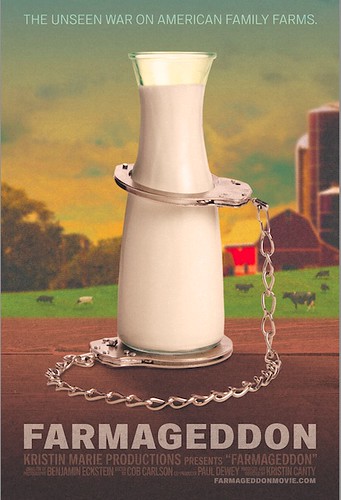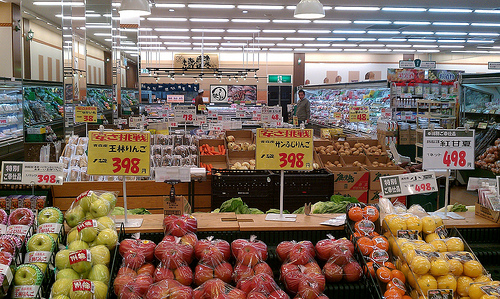Posts Tagged ‘Local Food’
Farmageddon: The Unseen War on American Family Farms
Picking up where FRESH and FOOD, INC. left off, FARMAGEDDON explores why Americans’ right to access fresh, healthy foods of their choice is under attack and answers the question: “Why is local food pricey and hard to find?”
This hard hitting documentary by filmmaker Kristin Canty will answer that question and make the viewer think about who owns their body and what kind of terror do America’s food polices inflict on heritage food providers?
Farmageddon highlights the urgency of food freedom, encouraging farmers and consumers alike to take action to preserve individuals’ rights to access food of their choice and farmers’ rights to produce these foods safely and free from unreasonably burdensome regulations. The film serves to put policymakers and regulators on notice that there is a growing movement of people aware that their freedom to choose the foods they want is in danger, a movement that is taking action with its dollars and its voting power to protect and preserve the dwindling number of family farms that are struggling to survive.
Peak Oil
I never intended this site to talk about militia tactics, conspiracy theories or post-oil survivalist ways, but it is becoming increasingly impossible to be involved in homesteading and the local food culture and not be at least aware of, if not affected by, the topic of Peak Oil.
I take solace though that the more I read and learn about energy issues the more content I feel that I have chickens who give us eggs, lambs who provide us with meat, a garden, berry patch and fruit orchard that supplies us with fresh produce and the where with all to combine those ingredients into a satisfying meal for my family.
If this topic is new to you or you’ve never heard about it before you may want to ask yourself these simple questions. What is Peak Oil? Do you think Peak Oil is fact or fiction? Do you or your family base decisions based on the future of oil?
Do you think the current boom in small farming and homesteading is the result of worries about peak oil, the food supply or energy issues in general, or is it just a fad? I’m sure our readers would be curious to know what you all think.
The Peak Oil clip above is a quick 3 minute video visually explaining Peak Oil, what oil is used for, and what the future may hold with regards to Peak Oil.
To learn more about Peak Oil check out this YouTube video by VideoNation, or simply plug Peak Oil into your browser window for more videos and articles.



Recent comments
Aenean nonummy hendrerit mauris. Phasellus porta.